03.10.2008: Back to the elevator. As the composite tips now hold as they should we decided to finish riveting and sealing them today. According to what we saw on other SportCruisers the opening where the support of the mass balance enters the composite tip is closed with the same polyurethane sealant as is used to glue the two together.
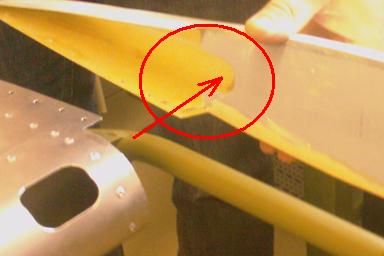
That leaves the back part of the cover open, however, as can be seen on the picture below. If this is not closed then the tip will fill with water if the plane is parked outside and the elevator pointing downwards, or maybe even when flying as the whole thing points forward..
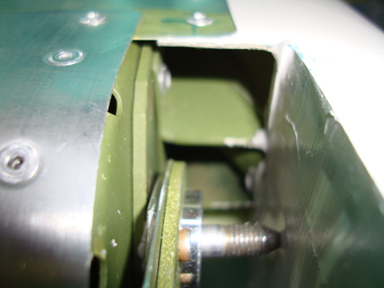
After consulting with Silvan we decided to close this opening to prevent water from collecting in the elevator and to add a small venting / draining hole at the lower end of the tip.
We manufactured two small brackets to close the holes, which will be attached by the first two rivets with which the composite tip is attached to the elevator.
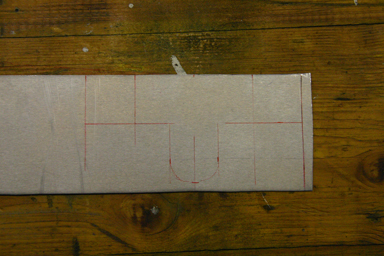


Here the finished product before and after priming.


In it’s final, installed form the cover looks like that.

We still used the polyurethane sealant to close the whole thing off, the picture was taken before trimming off the excess sealant.
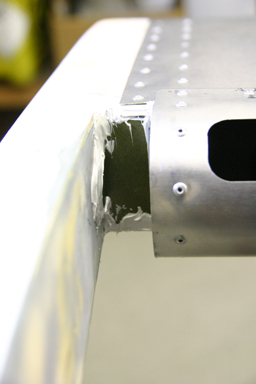
On the avionics side we decided to go for the Garmin GNS-430W! This might seem a bit of an overkill for a VFR plane, but it gives us an 8.33 kHz radio, VOR and GPS, and all of it certificated. This leaves the possibility to get a night VFR approval, and also makes the panel really clean. We figured out that if we use the SL-30 and a Becker 8.33 kHz radio we need a new audio panel as well, if we want to use both radios, and finally end up with a difference in price that is too small. An finally we are two builders to share the cost, and this is probably the only plane we will ever build…
08.10.2008: I am busy drawing the schematics for the panel as well as the cutout drawings. Space on the panel is tight, but somehow I will manage. Rolf is making progress with the nav lights and strobes, we will soon be able to test them.
18.10.2008: I am for the time being extremely busy at my work, so building is a bit “on hold”, except for paperwork which I can do in the evening. Last week I got the revised offer for the avionics, but also a call from Silvan who might have found a second hand GNS-430. Of course we are looking into that, as the GNS-430 will be the most expensive part of the plane apart of the engine… We are also working on finalising the autopilot installation.
On Tuesday afternoon I managed to leave work earlier to go flying with my younger daughter. The weather was not as good as forecasted, so we did not fly to Samedan as initially planned, but we made a nice tour non the less.
Just a few miles west of my home base lies Zurich airport, and if you want to fly in a south-westerly direction towards the alps the shortest way is right across the airport. I am always taking this route as it is quite spectacular for passengers to see planes taking off or landing right underneath you, and a good way to practice your radio skills. I am always surprised how helpful the controllers are, so far I have only been refused permission to transit the CTR once during rush hour.
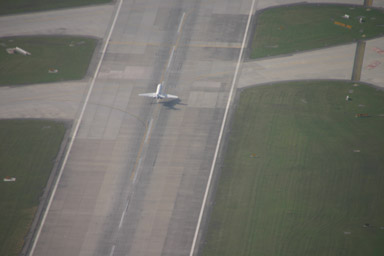
Just after passing the airport you can leave the CTR via overhead the City of Zurich, which again is nice as you normally don’t fly that low over a city. Below a picture of the main station and the Swiss National Museum on the left,.

Later we passed the Rigi mountain, which is a popular sightseeing spot for tourists.

From there we passed between the two Mythen mountains, which were a bit obscured by clouds. It looks quite bad on the photo, but it was way within VFR limits. Just before the mountain a F-5 Tiger II of the Swiss Air Force passed underneath us, which looked “cool” according to Mélanie.

We then continued through the Muotatal to the Klöntal…

…and then up the Glarus valley to Elm. We were looking for the Martinsloch, which is a 15 m hole in the mountain, and we found it. Twice a year during the equinox the sun shines through the hole onto the church of the village of Elm.

The further east we go the better the weather turned.

After reaching the Rhine valley we headed north again, passing the Säntis and from there back to Lommis.

Here the crew.

Of course we still had to have a look at the stable where Mélanie takes riding lessons…

…and at a balloon we saw on the approach to the airfield.
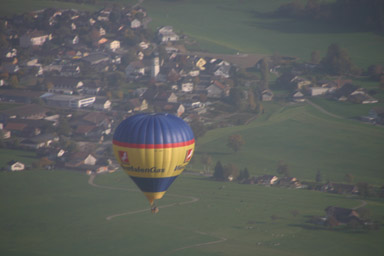
29.10.2008: I’m still busy at work, so no progress with building. I have the avionics list ready now for ordering, but I realised that the Garmin GNS-430, GTX-330 and the AvMap IV won’t fit in the available space. I am looking at various options, such as using a Garmin 495, Bendix-King AV80R or GeoPilot instead of the AvMap, placing the transponder on the right side of the panel etc.
As the available space in my garage is quite tight we will move the fuselage to a more roomy location soon to install the engine.
30.10.2008: It’s amazing what can happen in a day. Yesterday I was trying to figure our how to fit the AvMap IV onto the panel and today Garmin announces the GPSMAP 696, a new 7″ screen handheld GPS. Back to planning…
31.10.2008: Today Rolf and I took the train to Lugano to see Sandro’s SportCruiser, the second one under construction in Switzerland. It’s was a very nice and interesting visit, except that it was raining quite intensively the whole time. For those who are not Swiss, Lugano lies south of the alps, the weather should therefore typically be nice there….
I took a lot of pictures of many of the details of his kit, but forgot to take one that shows the whole workshop. Here just two of the pictures.
Sandro’s plane has a storage “tunnel” aft of the normal baggage compartment, which extends into the back fuselage. This will allow him to carry long items, like skis!

Below the panel, which he just started wiring. On the right side you can see the autopilot next to the Dynon EMS screen. Sandro ordered the autopilot and the servos one week ago and received them three days later. That’s fast.

He also ordered the same items for us, so we could take them home. Below the control panel and one of the two servos.

Initially we had planned to install a Digiflight autopilot, but then Dynon announced theirs which integrates nicely into the already present Dynon EFIS, so we cancelled the Digiflight order. Dynon announced that their servos will be “mechanically compatible” with the “industry standard”, so once at home I checked this. I can confirm that they fit exactly into the mounting holes that were foreseen for the Digiflight ones, as the picture below shows. Cool, that safes us a lot of work.
